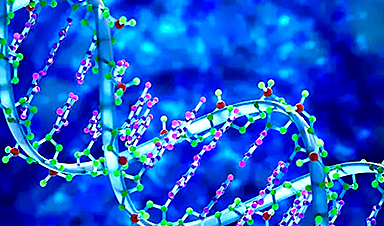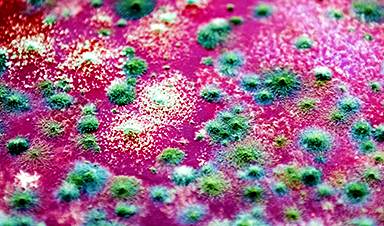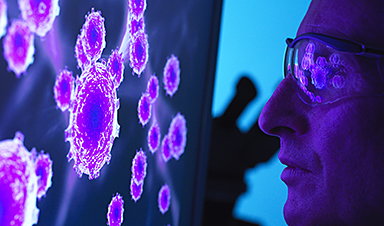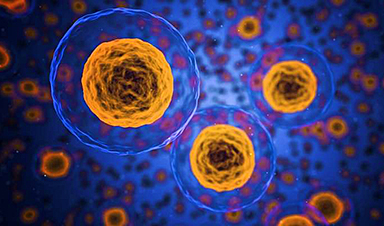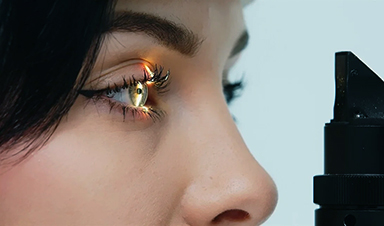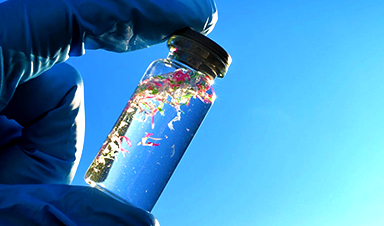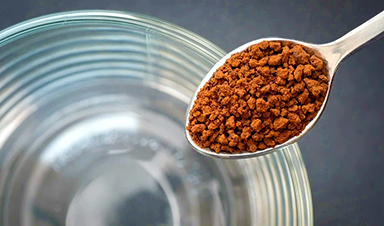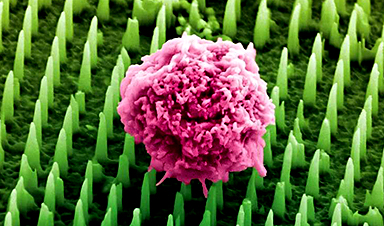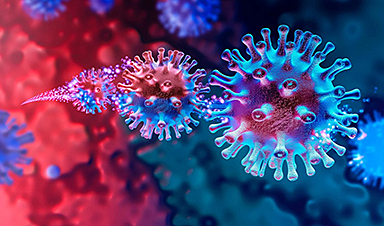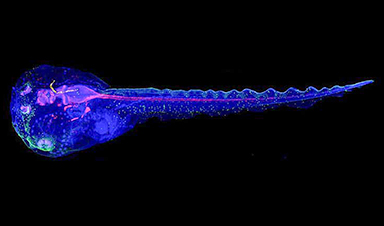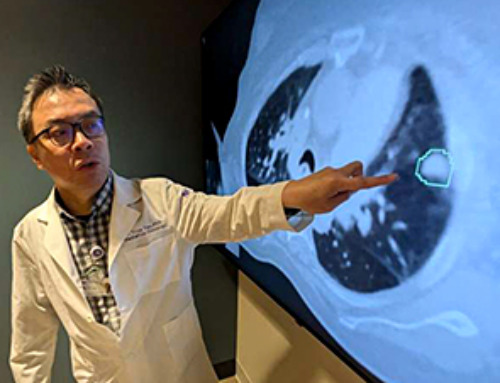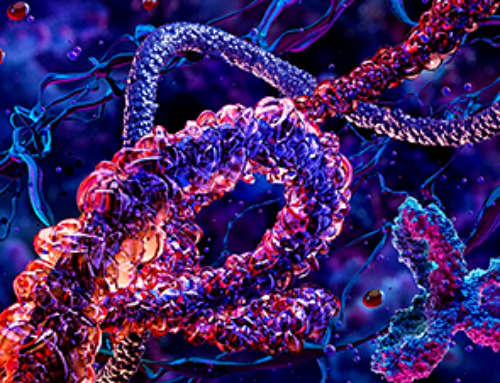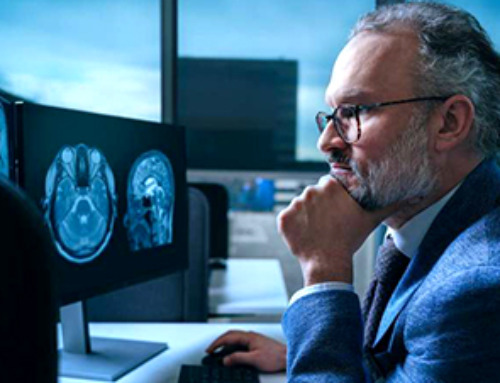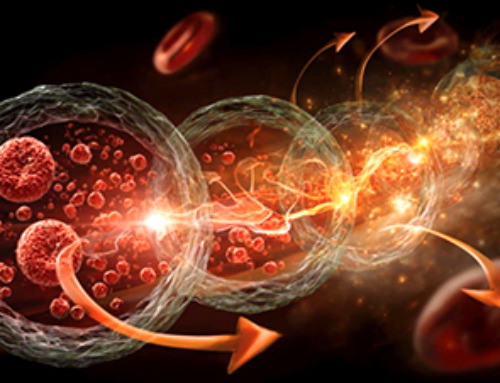Griffith University researchers have played a key role in using DNA “origami” templates to control the way viruses are assembled.
Dr. Frank Sainsbury and Dr. Donna McNeale from the Griffith Institute for Drug Discovery were part of the research team and said forcing viruses to assemble onto DNA folded into different shapes “like origami” was a question that this project answered.
“We achieved control over the virus protein shape, size and topology by using user-defined DNA origami nanostructures as binding and assembly platforms, which became embedded within the capsid,” Dr. Sainsbury said.
“The virus protein coatings could shield the encapsulated DNA origami from degradation.
“This activity is more like wrapping a present—the virus proteins deposit on top of the different shape that is defined by the DNA origami shape.
“And different virus proteins are like different wrapping paper, which would be relevant to different uses of the coated DNA origami.”
Precise control over the size and shape of virus proteins would have advantages in the development of new vaccines and delivery systems.
“But current tools to control the assembly process in a programmable manner were elusive,” Dr. McNeale said.
“Our approach is also not limited to a single type of virus capsid protein unit and can also be applied to RNA–DNA origami structures to pave way for next-generation cargo protection and targeting strategies.”
Currently, Dr. Sainsbury and his team are working on gaining a more in-depth understanding of how different viruses self-assemble and how they can be used to encapsulate different cargoes.
This will allow them to design and modify further virus-like particles for a range of uses. For example, they discovered that one virus found in mice is able to carry protein cargoes through inhospitable environments and into a specific subcellular compartment in human cells.
“With the enormous existing design space among viruses that could be used as carriers, there is still much to learn from studying them. We’ll continue to push the boundaries of how virus-like particles can assemble and what can be learned from using them as medicine transporters, vaccines and biochemical reaction vessels,” Dr. Sainsbury said.
The next stage of the GRIDD team’s research will use this approach to look at why viruses don’t assemble into different shapes themselves.
More information: DNA-origami-directed virus capsid polymorphism, Nature Nanotechnology (2023). DOI: 10.1038/s41565-023-01443-x, https://www.nature.com/articles/s41565-023-01443-x
Journal information: Nature Nanotechnology
News
AI matches doctors in mapping lung tumors for radiation therapy
In radiation therapy, precision can save lives. Oncologists must carefully map the size and location of a tumor before delivering high-dose radiation to destroy cancer cells while sparing healthy tissue. But this process, called [...]
Scientists Finally “See” Key Protein That Controls Inflammation
Researchers used advanced microscopy to uncover important protein structures. For the first time, two important protein structures in the human body are being visualized, thanks in part to cutting-edge technology at the University of [...]
AI tool detects 9 types of dementia from a single brain scan
Mayo Clinic researchers have developed a new artificial intelligence (AI) tool that helps clinicians identify brain activity patterns linked to nine types of dementia, including Alzheimer's disease, using a single, widely available scan—a transformative [...]
Is plastic packaging putting more than just food on your plate?
New research reveals that common food packaging and utensils can shed microscopic plastics into our food, prompting urgent calls for stricter testing and updated regulations to protect public health. Beyond microplastics: The analysis intentionally [...]
Aging Spreads Through the Bloodstream
Summary: New research reveals that aging isn’t just a local cellular process—it can spread throughout the body via the bloodstream. A redox-sensitive protein called ReHMGB1, secreted by senescent cells, was found to trigger aging features [...]
AI and nanomedicine find rare biomarkers for prostrate cancer and atherosclerosis
Imagine a stadium packed with 75,000 fans, all wearing green and white jerseys—except one person in a solid green shirt. Finding that person would be tough. That's how hard it is for scientists to [...]
Are Pesticides Breeding the Next Pandemic? Experts Warn of Fungal Superbugs
Fungicides used in agriculture have been linked to an increase in resistance to antifungal drugs in both humans and animals. Fungal infections are on the rise, and two UC Davis infectious disease experts, Dr. George Thompson [...]
Scientists Crack the 500-Million-Year-Old Code That Controls Your Immune System
A collaborative team from Penn Medicine and Penn Engineering has uncovered the mathematical principles behind a 500-million-year-old protein network that determines whether foreign materials are recognized as friend or foe. How does your body [...]
Team discovers how tiny parts of cells stay organized, new insights for blocking cancer growth
A team of international researchers led by scientists at City of Hope provides the most thorough account yet of an elusive target for cancer treatment. Published in Science Advances, the study suggests a complex signaling [...]
Nanomaterials in Ophthalmology: A Review
Eye diseases are becoming more common. In 2020, over 250 million people had mild vision problems, and 295 million experienced moderate to severe ocular conditions. In response, researchers are turning to nanotechnology and nanomaterials—tools that are transforming [...]
Natural Plant Extract Removes up to 90% of Microplastics From Water
Researchers found that natural polymers derived from okra and fenugreek are highly effective at removing microplastics from water. The same sticky substances that make okra slimy and give fenugreek its gel-like texture could help [...]
Instant coffee may damage your eyes, genetic study finds
A new genetic study shows that just one extra cup of instant coffee a day could significantly increase your risk of developing dry AMD, shedding fresh light on how our daily beverage choices may [...]
Nanoneedle patch offers painless alternative to traditional cancer biopsies
A patch containing tens of millions of microscopic nanoneedles could soon replace traditional biopsies, scientists have found. The patch offers a painless and less invasive alternative for millions of patients worldwide who undergo biopsies [...]
Small antibodies provide broad protection against SARS coronaviruses
Scientists have discovered a unique class of small antibodies that are strongly protective against a wide range of SARS coronaviruses, including SARS-CoV-1 and numerous early and recent SARS-CoV-2 variants. The unique antibodies target an [...]
Controlling This One Molecule Could Halt Alzheimer’s in Its Tracks
New research identifies the immune molecule STING as a driver of brain damage in Alzheimer’s. A new approach to Alzheimer’s disease has led to an exciting discovery that could help stop the devastating cognitive decline [...]
Cyborg tadpoles are helping us learn how brain development starts
How does our brain, which is capable of generating complex thoughts, actions and even self-reflection, grow out of essentially nothing? An experiment in tadpoles, in which an electronic implant was incorporated into a precursor [...]
